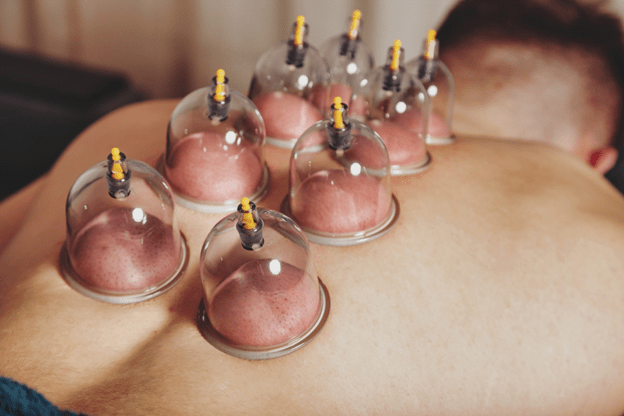Intro
Cupping therapy is an alternative therapeutic technique that involves placing cups on the skin to create a vacuum effect. This technique has been used for centuries in various cultures, including traditional Chinese medicine, and Egyptian, and Middle Eastern practices. Cupping is believed to promote healing, improve blood circulation, and relieve pain. Cupping treatment has a long history in many cultures throughout the world and was made popular in the West by Olympic competitors. According to historians, it was used in ancient China as well as the Middle East, southern Europe, and India at the same time. And even though the sorts of cups used may have changed since then, the fundamentals and method of cupping have astonishingly remained the same.
Dr. S. M. Shahidul Islam is the best pain management doctor in Dhaka, Bangladesh. He provide the best acupuncture treatment for pain. Cupping therapy is one of the best therapy for pain relief.
How does cupping treatment work?
Cupping is the process of creating suction in a smooth glass cup at an acupuncture clinic. When I place the glass cup on the skin to draw up the skin and superficial muscle layer into the cup, I use heat within the glass cup to produce suction. In accordance with the condition being treated, the cups are left in place for 10 to 25 minutes.
What is the purpose of cupping therapy?
Numerous therapeutic applications of cupping are based on the ancient Chinese medical tenet that pain exists wherever there is stagnation. When the stagnation is removed, the agony also disappears. Essentially, cupping is used to relieve tension and clear obstructions, reestablishing the body’s normal flow of blood and lymphatic fluid. As a result, cupping can be employed for:
- Treating digestive problems, such as sensations of bloating, reflux, and constipation.
- Enhancing the microcirculation, which enhances muscular relaxation.
- Stimulating the lymphatic system to facilitate the removal of extra fluid and toxins.
- Treating musculoskeletal conditions includes shoulder stress, back, and neck discomfort, recurring injuries, and overall muscular tightness.
In a treatment plan, cupping can be used with acupuncture or used as a standalone therapy.
Is cupping therapy appropriate for all individuals?
When choosing to employ cupping, there are a few things to keep in mind because of the nature of the procedure. It is acceptable for the great majority of adult patients, however, patients who are using blood thinners or who have sensitive or irritated skin should be treated with extra caution. This indicates that cupping is probably not the best course of therapy for you right now if you have a sunburn, skin ulcer, or a wound. Always inform your healthcare provider if you are expecting or nursing since there are several acupuncture areas that you should avoid. However, most of the time, cupping is really secure and has no negative consequences other than cup marks.

What signs does cupping leave behind?
Even while the scars left behind by cupping sometimes resemble bruises, they are really different. They don’t hurt and aren’t even sensitive to touch, to begin with. In fact, you wouldn’t even be aware that they were there if you didn’t see them. Bruises are the consequence of impact trauma, which compresses nearby muscles and tissues, breaks capillaries, and causes blood to collect beneath the skin. While there is no contact or damage during cupping, pathologic elements and stagnant bodily fluids such as interstitial waste, blood, and lymph fluids are brought to the surface.
The body may remove waste by releasing it from the muscles, which makes a place for wholesome fluids to perfuse the area. Pale crimson to darker red and purple can all be seen in the scars that are left behind. They can continue for three to seven days, but as you get more treatments, they normally get shorter.
Aftercare following cupping therapy
After your cupping treatment, drink lots of water to keep hydrated. In the days after your consultation, this will help your lymphatic system remove pollutants. Cover and keep warm the parts that received treatment. After your cupping treatment, be careful to rest and take it easy if you feel worn out during the day. Get an early night and think about your body’s nutritional needs because now is the ideal time to conduct self-care. Cupping is a calming procedure that helps calm the body and the psyche.

Epilogue
To maintain a balanced and evidence-based approach when discussing cupping therapy, especially given the lack of extensive scientific research supporting its benefits. Always encourage readers to consult with healthcare professionals before trying any alternative therapies
